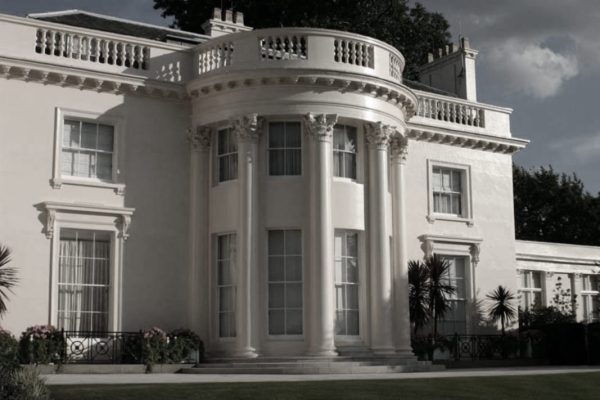The foundations of St Leonards
While James Burton was working on Chester Terrace in London in 1827 he conceived his scheme for a seaside resort. The original plans, now in the Hastings Museum, take no account of the coastline at St Leonards and may not have been drawn up with a location in mind. In the end they had to be adapted to fit the topography of the area.
By late 1827 Burton had decided on St Leonards and negotiated with the trustees of the Eversfield Estate for a section of Gensing Farm. In February 1828 the Sussex Weekly Advertiser announced the start of building. The land purchased consisted of a coastal strip stretching for about three quarters of a mile and at its centre half a mile inland up a wooded valley known as the Old Woman’s Tap Shaw.
James Burton’s concept for St Leonards was strongly influenced by his involvement with Nash in Regents Park. He copied with care the grand, classical style of Nash’s terraces, the provision of service areas, public buildings for entertainment and the picturesque siting of villas amongst the groves, wooded slopes and water of the Subscription Gardens.
By the end of 1828 Burton had built his own house, West Villa (now 57 Marina) in addition to the South Colonnade on the sea side of the road and the entrance archway. In 1829 a prospectus was issued showing the type of accommodation and services that would be available and by 1832 most of the terraces, villas and public buildings were complete.
In addition he persuaded the Turnpike Commissioners to have the road leading to St Leonards included in the scheme, and arranged for the road through Silverhill to be built so as to give access. Before he died, in 1837, St Leonards (Royal Victoria) Hotel, the South Colonnade, an archway marking the town boundary with Hastings, and tall seafront houses (as far as 71 Marina) had also been completed. His grave is marked by a pyramid in the churchyard above St Leonards Church.
In 1850 his son Decimus started the second phase of building by acquiring more land and extending the development westward. He lived in the town for the remainder of his life.













